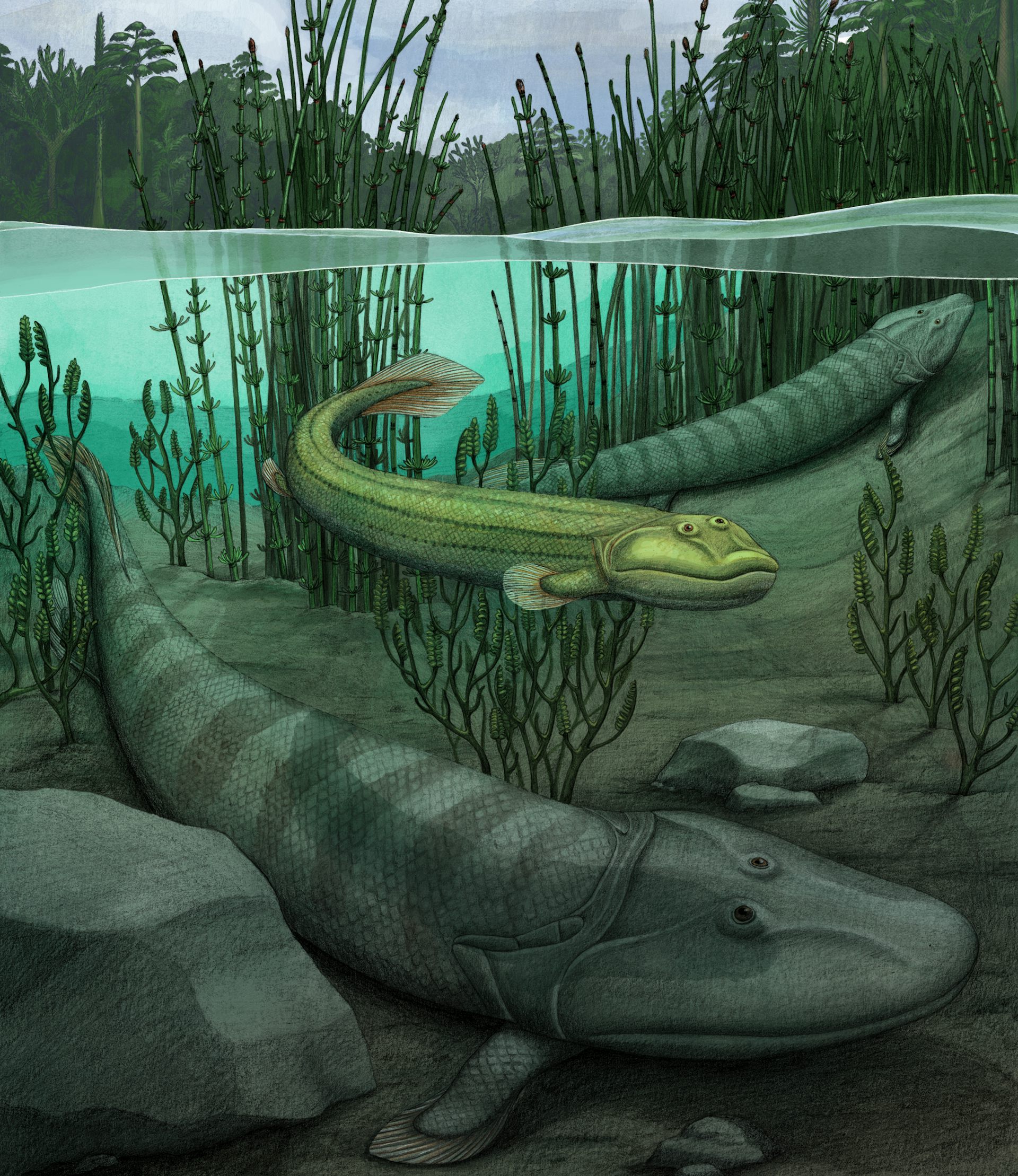An artist reconstruction of Ailurarctos from Shuitangba.
Illustration by Mauricio Anton

An artist reconstruction of
Ailurarctos from Shuitangba. The grasping function of its false thumb (shown in the right individual) has reached to the level of modern pandas, whereas the radial sesamoid may have protruded slightly more than its modern counterpart during walking (seen in the left individual).
Illustration by Mauricio Anton
Technically, of course, all fossils are transitional since they represent a species at a given point in time and come precisely between its parent's generation and it's descendants, but creationists continue to demand examples of 'transitions' that illustrate their childish parody of evolution - one species, or order, changing into another with individuals midway between the two - a half fish - half monkey, or something equally ludicrous that no-one in their right mind would expect to see.
In other words, as often with creationists, they have been conditioned to demand proof of something that no scientists has ever claimed happened and something that is so different to what the TOE actually predicts, it would actually falsify the TOE if it were found.
But of course, real 'transitional' fossils abound because, like the example in this article, there are abundant examples of gradual changes in morphology over time. In this instance, the example is of the evolution of the pseudo-digit or 'thumb' in the panda, which is one of the anatomical differences between pandas and the other bears. Clearly, if, pandas, which are no known to be closely related to bears, share a common ancestor with them, we should expect an ancestor of the pandas to have a pseudo thumb, which is a development of the radial sesamoid bone of the wrist, somewhere between that of bears, which don't have one, and that of modern pandas.
And this is exactly what has been found in a fossil from the Shuitangba site in the City of Zhaotong, Yunnan Province, China dated to about 6-7 million years old. The only thing is that it is actually
longer that that of modern pandas, although this doesn't necessarily mean it isn't intermediate, since a long pseudo thumb might not have been especially well adapted for both walking and gripping which involves a compromise.
The Natural History Museums of Los Angeles County news release explains:



































